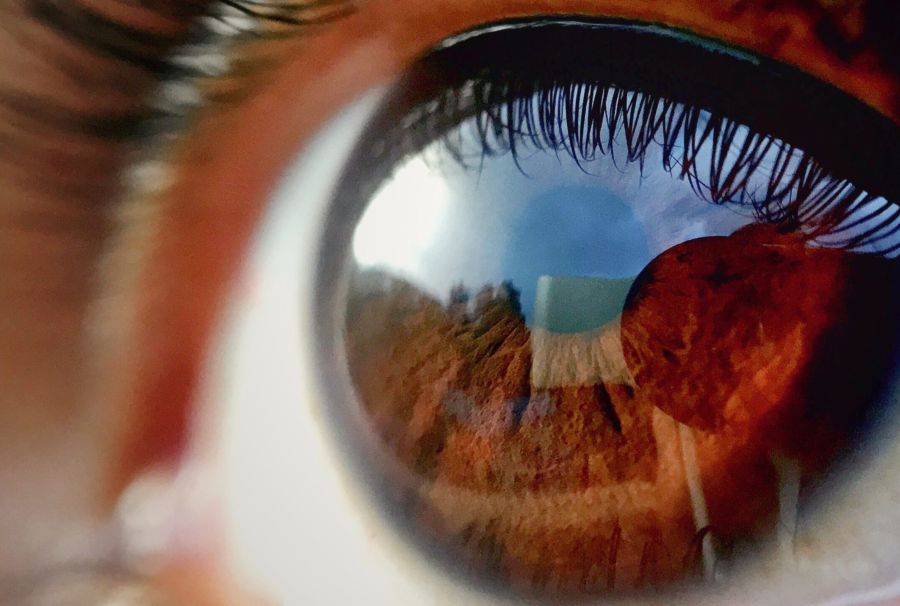Tele-ophthalmology Takes Hold

During the coronavirus pandemic, we’ve all had to modify the way we do things in order to minimize exposure to the virus. At the Wilmer Eye Institute, Johns Hopkins Medicine, clinicians and researchers have found that some of these modifications have brought unexpected benefits. Conducting Grand Rounds by Zoom, for example, has allowed them to share their knowledge with a broader audience. “We have had over 200 doctors, often from all around the country and sometimes other countries, tuning in to our Grand Rounds,” says Wilmer director Peter J. McDonnell. “People like me have been able to lecture to doctors around the world without leaving the office.”
Today, video technology is also being used to connect doctors and patients. “Telemedicine, aka video appointments, can help decrease the overall risk of spreading the coronavirus, but it’s proved especially beneficial for older Wilmer patients, who are at high risk of becoming seriously ill should they become infected,” says Michael Repka, vice chair for clinical practice at Wilmer.
Although virtual medicine has become more mainstream by necessity, it’s unclear if it will become standard practice for certain types of care, Repka says. Still, he considers the current situation an impetus for re-thinking how the technology can be used and for innovation across platforms.
In some cases, such innovation can be critical. Adrienne Scott, an associate professor of ophthalmology at Wilmer, specializes in the treatment of vitreoretinal diseases with an emphasis on sickle cell retinopathy. Scott says when the pandemic hit, many patients put off things like routine screenings because of fear of contracting the virus. But for patients with sickle cell disease, delaying care can mean losing sight.
Sickle cell disease is an inherited blood disorder that affects 3.2 million people worldwide. It’s characterized by painful vaso-occlusive crises — when oxygen can’t reach the tissues of the body — and a pattern of end-organ damage. Sickle cell disease can affect every part of the body, including the brain, lungs, bones, kidneys and eyes.
To explain how sickle cell affects the eyes, Scott refers to a widely accepted staging system classified in 1971 by Morton Goldberg — now director emeritus at Wilmer — based on a characteristic pattern of vascular remodeling of the eye in people with sickle cell disease. “In stage I, you get closure of the blood vessels,” Scott says. “In stage II, the blood vessels start to have abnormal loops, and in stage III, abnormal new blood vessels grow. (Goldberg termed this new blood vessel formation “sea-fan vascularization” for its resemblance to the marine animal.)
“At stage III, when the person has new blood vessels, they can be asymptomatic and enjoy excellent vision and may not even know they have new blood vessels growing,” says Scott. “However, as the disease progresses to stage IV, causing bleeding in the eye, or even stage V, causing detached retina, vision impairment and blindness can result.” The goal, then, is to identify people with sickle cell disease and arrest the retinopathy before vision is impacted.
Current National Institutes of Health (NIH) guidelines recommend that patients with sickle cell disease be referred by their primary hematologist or internist for a dilated retinal exam beginning at age 10. But, says Scott, “This is a lifelong disease, and these vascular changes take their toll from birth, so they’re cumulative through the years.” This, coupled with the fact that the NIH guidelines were primarily based on expert consensus rather than large-scale clinical trial evidence, led Scott to undertake — pre-pandemic — a study to see if proliferative sickle cell retinopathy (PSR) can be detected at an earlier stage.
Patients with sickle cell disease regularly visit the Johns Hopkins Sickle Cell Infusion Center for their care. Scott and her team wanted to determine if pictures captured in the hematology clinic could be used to identify PSR. To inform the study, they placed in the clinic an ultra-widefield fundus (retinal) camera, which can catch abnormal lesions in the retina even before a patient becomes symptomatic. Personnel with no professional training in photography were able to be trained in about five or 10 minutes to obtain retinal images of patients with sickle cell disease. The photos were then evaluated by retina specialists and compared to standard exam findings for patients in the retina clinic.
“We have about 60 patients enrolled to date, and so far, there’s a high correlation between grading assigned to the retinal photos and their in-person retina exams that these pictures are being compared against,” says Scott. She says this method could be especially valuable during the pandemic as we look for alternatives to traditional clinic-based care. “Patients can get their photo at the hematology clinic, without having to have their eyes dilated,” Scott says, “and we can use a tele-ophthalmology approach to grade the images to tell whether or not the patient is in need of a formal retina exam, as well as how soon they need to see the retinal specialist.” Such an approach could not only minimize visits for patients with no or very little retinopathy, but it could expedite visits for patients with sight-threatening retinopathy.
Scott’s team is now conducting a second study to determine if ultra-widefield images can be used to train a computer to detect PSR. “We hear a lot about machine learning these days and deep-learning technologies,” says Scott. “These are ways in which you train a computer system to identify patterns, in this case in a retinal photo, to be able to identify whether there is this sight-threatening retinopathy or not.”
Scott also cites the potential of these methods for use in medically underserved populations, including in Africa, where the majority of patients with sickle cell disease live. “If you can imagine, we can get an undilated photo through the fundus camera and be able to use a machine-learning algorithm to identify which patients have vision-threatening retinopathy,” she says.
Telemedicine applications for ultra-widefield imaging are also likely to expand with the increasing prevalence of diabetes around the world. For example, it could be used to assess and predict worsening diabetic macular edema and diabetic retinopathy, as well as conditions such as age-related macular degeneration.
For now, ophthalmologists from the Wilmer Eye Institute and other institutions have joined forces to establish a communication network in which providers can share best practices in telemedicine adaptation, particularly as they relate to COVID-19. Beyond the pandemic, however, they plan to continue to combine resources and knowledge about tele-ophthalmology through the online platform TeleVision MD.
Image: Adrienne Scott, M.D. – Taken from the Wilmer Eye Institute article
Source: Wilmer Eye Institute
Date: 16 November 2020
